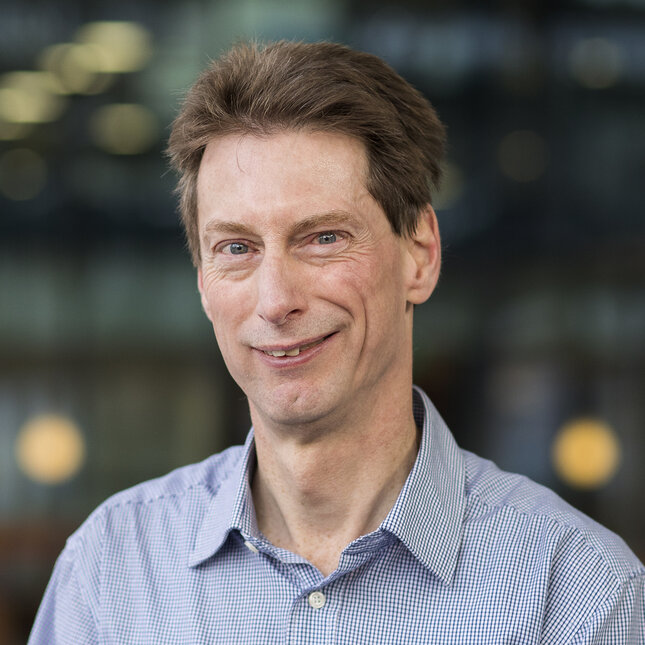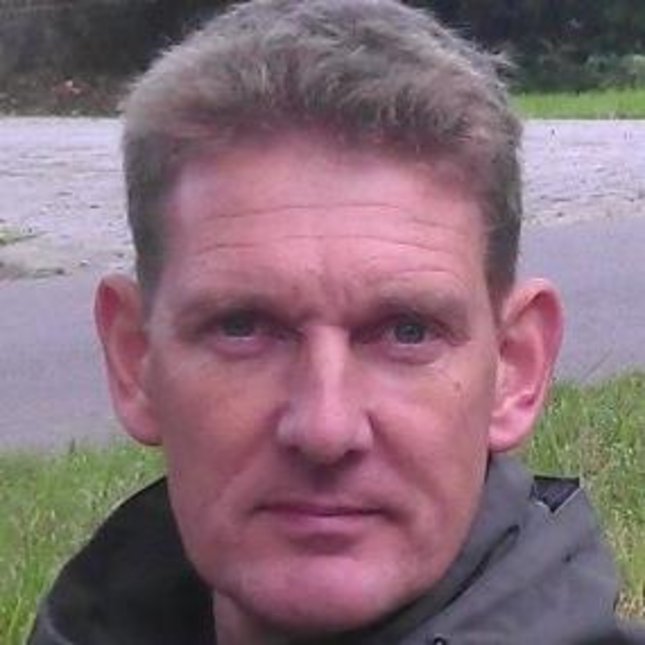Gregor van Baars and Hans Butler, advanced piezo-electric wafer stage project
If Plan B still has to be researched when it’s needed, you’re a bit too late.
“The best thing to do in a relationship such as that of ASML and the university is to start thinking about this at an early stage.”
A key innovation of the High Tech Systems Center is its emphasis on the interface between industry and academia. Through demand-driven PhDs, co-location set-ups and a network of multidisciplinary professors, fundamental research can be brought to applications with enormous promise. In this article, Gregor van Baars and Hans Butler discuss the potential of one such project: advanced piezo-electric wafer stage for next generation lithography and metrology applications. This project is a collaboration of TU/e High Tech Systems Center and ASML, and is co-located at the Eindhoven Engine.
The ASML connection
Gregor and Hans both have a history with ASML dating back decades, with Hans having joined the company in 1991. Since 2012, he’s also been a part-time professor in the Control Systems group of TU Eindhoven’s Department of Electrical Engineering. “Of course,” he notes, “there are many common projects between the university and ASML. After a lot of deliberation, we came up with this proposal, which covers all aspects of a piezo-driven wafer stage. My role now is mostly in the supervision of one of the PhD students, Clarisse Bosman Barros.”
Gregor, on the other hand, began his association at Philips Research Laboratories – then the home of much of ASML’s developments. Two years ago, having moved to TNO in 2011, he was approached by HTSC management Maarten Steinbuch and Katja Pahnke. Gregor: “They told me that ASML is looking to investigate possibilities for a new wafer stage and asked me if I’d be interested in supporting HTSC in coordinating the collaborative research. The aim was to have multiple PhDs working together in a system context, but some guidance and supervision was wanted.”
The search for new battlefields
At the heart of the project lies the piezo-electric effect: the capacity for certain materials to generate an electric charge when mechanical stress is applied or to generate a force when fed with a charge. Whereas modern lithography and metrology systems use electromagnetic actuators, this research concerns a shift to piezo-electric.

“Basically,” explains Hans, “it’s about a stage that can move a wafer. One advantage of piezo actuators is that they won’t generate an electromagnetic field. We could also make more lightweight stages, increasing acceleration and making them faster. The main problem is a very high mechanical stiffness of the piezo actuator. As opposed to existing wafer stages, the part to be positioned is now physically coupled to the long-stroke actuator with its relatively large vibrations. We need to find out how to control this system such that the coupling to the long-stroke is no longer a problem for accurate positioning.”
Tackling this issue requires a division into four sub-problems, each dealt with by one PhD student:
- What should the machine architecture look like?
- What kind of control systems do we need to ensure that vibrations do not enter the accurate positioning part?
- What should the piezo actuator itself look like, including the required electronics?
- Which signals do we need to accurately measure within the system and what kind of measurement system do we need for this?
“The electromagnetic concept has great design principles, so it was a very good step more than 20 years ago,” says Gregor. “ASML has been able to squeeze every bit of performance from this – but you also wonder, how long can it continue? The effort is growing. A starting point to look for new concepts that might be found when doing things that are completely opposite to these design principles. That might sound silly, but it can lead to new battlefields of academia and engineering. As Hans says, this has benefits but also major concerns. It would be very valuable if we could prove that this Plan B system concept is feasible from a research perspective. But if we find out that it doesn’t work, that’s also good to know now rather than by the time a real Plan B is urgently needed.”
The university perspective
Since the start of the first PhD in September 2018, the project has slowly been evolving. The formation of Eindhoven Engine, for example, saw the work incorporated as one of its founding projects; the research has also been supplemented by PDEng and master’s students. Hans: “One of the most difficult things is finding people who can deal with these problems. At the moment, we have two PhD students. Clarisse is working on the control system and the other, Rachel Jones, is working on the measurement system. For one of the other two sub-problems, we’ve found a candidate and we’re quite confident that he’ll start in the summer this year. For the last, we’re talking to candidates but haven’t booked one yet.”
"It can lead to new battlefields of academia and engineering."
An additional challenge has been the testing of Plan Bs, Cs and Ds in a research system context as well as a technical one. “There’s a lot of belief in the HTSC way of working and we have to put that into practice,” Gregor points out. “Of course, we also have to do better than previous attempts to bring multiple PhDs together. We wanted to make it clear from the start that they need to sit together one or two days a week so they can build a common awareness of their shared goal. I like this a lot, but the biggest collaboration is still ahead of us.”
“From a university perspective,” says Hans, “I’ve noticed in the past that zero contact with industry typically makes it difficult to focus research on methods that are actually applicable in practice. It’s important at the start to have input on all the requirements from an industrial perspective and communication on the boundary conditions that the solution has to meet.”
As Gregor further notes, industrial-academic relationships bring important benefits to the students themselves. “In general, students also like to work on problems that lead to solutions applied in real life. There must be relevance to motivate them to work, and deeper knowledge questions can also receive direction from things that are not possible today. How are we are going to develop theory or technologies that can overcome these hurdles? Lots of students like this.”
The strength of a community

Hans and Gregor are keen to point out the roles of many other individuals: ASML coordinator Bas Jansen, ASML group lead for mechatronics research Wouter Aangenent and supervisors Erwin Bente (Photonic Integration), Koos van Berkel (ASML), Hans Butler (Control Systems), Jeroen van Duivenbode (Electromechanics and Power Electronics), Roland Toth (Control Systems) and Hans Vermeulen (Controls Systems Technology). From industry to academia and HTSC to ASML, it’s these networks that allow fundamental knowledge to be transformed into meaningful applications. For this reason, their work was converted into an Eindhoven Engine project for further acceleration through co-location at Eindhoven Engine’s Multimedia Paviljoen building on the TU/e campus, surrounded by a broader ecosystem of companies and researchers.
As for the future of piezo actuators, Hans is taking things one step at a time. “Clarisse has been working on new control insights and we’re now considering using an existing test center at ASML to see if there’s true potential in these ideas. The question is then: in which machine will they be applied? We’re in a research phase so it’s too early to say.”
“I’d really like to see the team in full swing and I hope that we can then accelerate this idea a lot,” adds Gregor. “It would be highly motivating to see the initial potential of this new system and build a belief that it will actually work. I look forward to seeing that in the next year.”
For more information about this project, please contact Gregor.